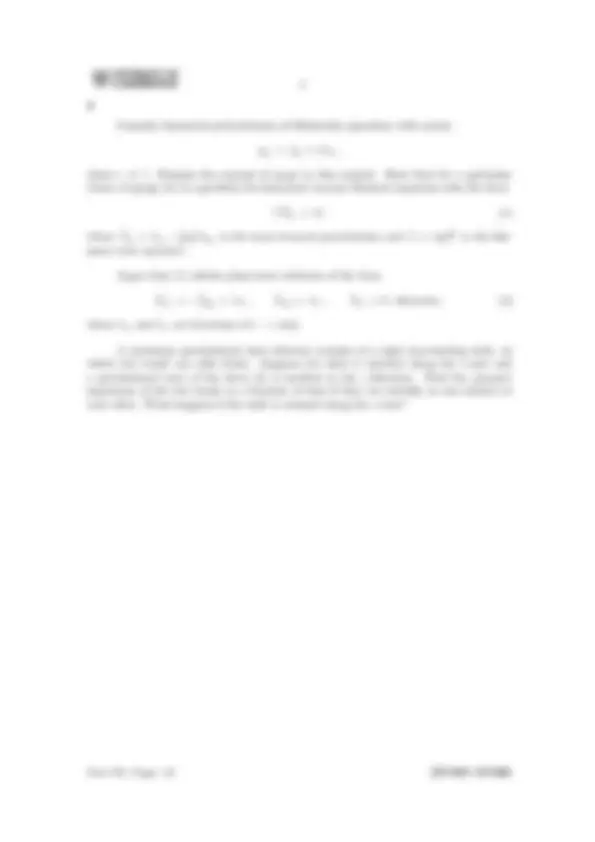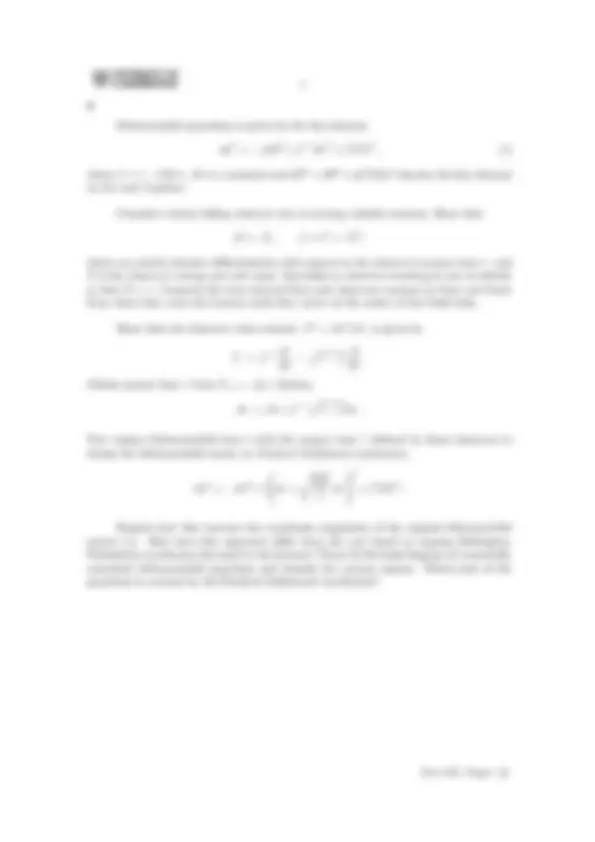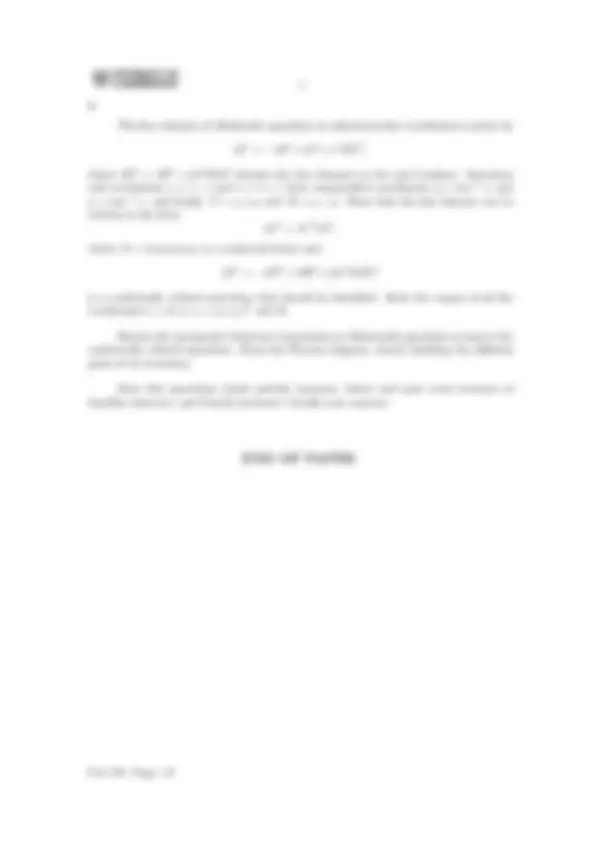





Study with the several resources on Docsity

Earn points by helping other students or get them with a premium plan


Prepare for your exams
Study with the several resources on Docsity

Earn points to download
Earn points by helping other students or get them with a premium plan
Community
Ask the community for help and clear up your study doubts
Discover the best universities in your country according to Docsity users
Free resources
Download our free guides on studying techniques, anxiety management strategies, and thesis advice from Docsity tutors
The third part of the mathematical tripos exam paper 52 focused on general relativity. It includes three questions covering topics such as nordstrøm's theory, linearized perturbations of minkowski spacetime, and schwarzschild spacetime. Students are required to demonstrate their understanding of the concepts and apply the theories to solve problems.
Typology: Exams
1 / 5

This page cannot be seen from the preview
Don't miss anything!




Thursday, 27 May, 2010 1:30 pm to 4:30 pm
Attempt no more than THREE questions. There are FOUR questions in total. The questions carry equal weight.
The signature is (− + ++) and the Riemann curvature tensor convention is
R ijkl = Γ ijl,k − Γ ijk,l + Γ imkΓ mjl − Γ imlΓ mjk.
Cover sheet None Treasury Tag Script paper
You may not start to read the questions printed on the subsequent pages until instructed to do so by the Invigilator.
Nordstrøm’s theory (1913) is an alternative theory of gravity in which spacetime is endowed with a flat background metric ηij and a scalar field φ that is generated via
ηij^ φ,ij = − 4 πφ ηij^ Tij ,
where Tij is the energy-momentum tensor of the matter. The physical metric gij that determines the geodesic motion of test particles is then given by
gij = φ^2 ηij.
(a) Assume that φ ≈ 1 and that time variations of φ are small compared to spatial variations. Let spacetime contain a pressureless perfect fluid. Show that φ obeys the same Poisson equation as the gravitational potential in Newtonian theory. Show also that the trajectories xα(t) of freely falling particles in Newtonian theory coincide with the geodesics in Nordstrøm’s theory for non-relativistic velocities || x˙α(t)|| ≪ 1.
(b) Is Nordstrøm’s theory in agreement with the Pound-Rebka experiment?
(c) Is Nordstrøm’s theory consistent with the observed bending of light by the Sun?
Give reasons for your answers.
Part III, Paper 52
Schwarzschild spacetime is given by the line element
ds^2 = −f dt^2 + f −^1 dr^2 + r^2 d Σ 2 , (1)
where f ≡ 1 − 2 M/r, M is a constant and dΣ^2 = dθ^2 + sin^2 θdφ^2 denotes the line element on the unit 2-sphere.
Consider a freely falling observer who is moving radially inwards. Show that
f t˙ = E , f + ˙r^2 = E 2 ,
where an overdot denotes differentiation with respect to the observer’s proper time τ , and E is the observer’s energy per unit mass. Specialise to observers starting at rest at infinity so that E = 1. Compute the time interval that such observers measure in their rest frame from when they cross the horizon until they arrive at the centre of the black hole.
Show that the observer’s four-velocity U a^ = dxa/dτ is given by
U = f −^1
∂t
1 − f
∂r
Obtain proper time τ from Ua = −∂aτ , finding
dτ = dt + f −^1
1 − f dr.
Now replace Schwarzschild time t with the proper time τ defined by these observers to obtain the Schwarzschild metric in Painlev´e-Gullstrand coordinates,
ds^2 = −dτ 2 +
dr +
r
dτ
Explain how this removes the coordinate singularity of the original Schwarzschild metric (1). How does this approach differ from the one based on ingoing Eddington- Finkelstein coordinates discussed in the lectures? Draw the Kruskal diagram of (maximally extended) Schwarzschild spacetime and identify the various regions. Which part of the spacetime is covered by the Painlev´e-Gullstrand coordinates?
Part III, Paper 52
The line element of Minkowski spacetime in spherical polar coordinates is given by
ds^2 = −dt^2 + dr^2 + r^2 dΣ 2 ,
where dΣ^2 = dθ^2 + sin^2 θdφ^2 denotes the line element on the unit 2-sphere. Introduce null coordinates u = t − r and v = t + r, then compactified coordinates p = tan−^1 u and q = tan−^1 v , and finally T = q + p and R = q − p. Show that the line element can be written in the form ds^2 = Ω−^2 dˆs^2 , where Ω = 2 cos p cos q is a conformal factor and
dˆs^2 = −dT 2 + dR^2 + sin^2 R dΣ 2
is a conformally related spacetime that should be identified. State the ranges of all the coordinates t, r, θ, φ, u, v, p, q, T and R.
Discuss the asymptotic behaviour of geodesics in Minkowski spacetime as seen in the conformally related spacetime. Draw the Penrose diagram, clearly labelling the different parts of its boundary.
Does this spacetime admit particle horizons, future and past event horizons of timelike observers, and Cauchy horizons? Justify your answers.
Part III, Paper 52